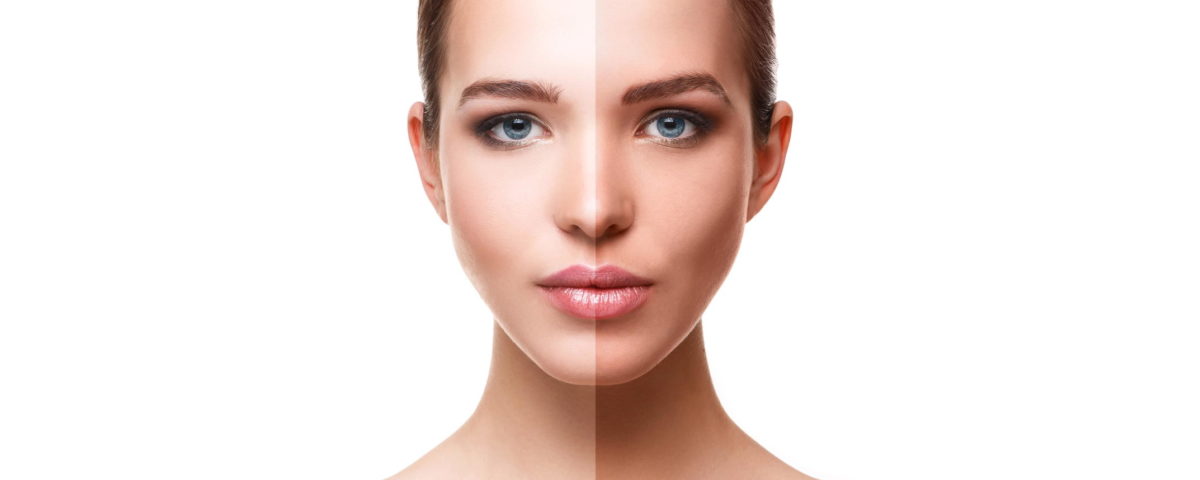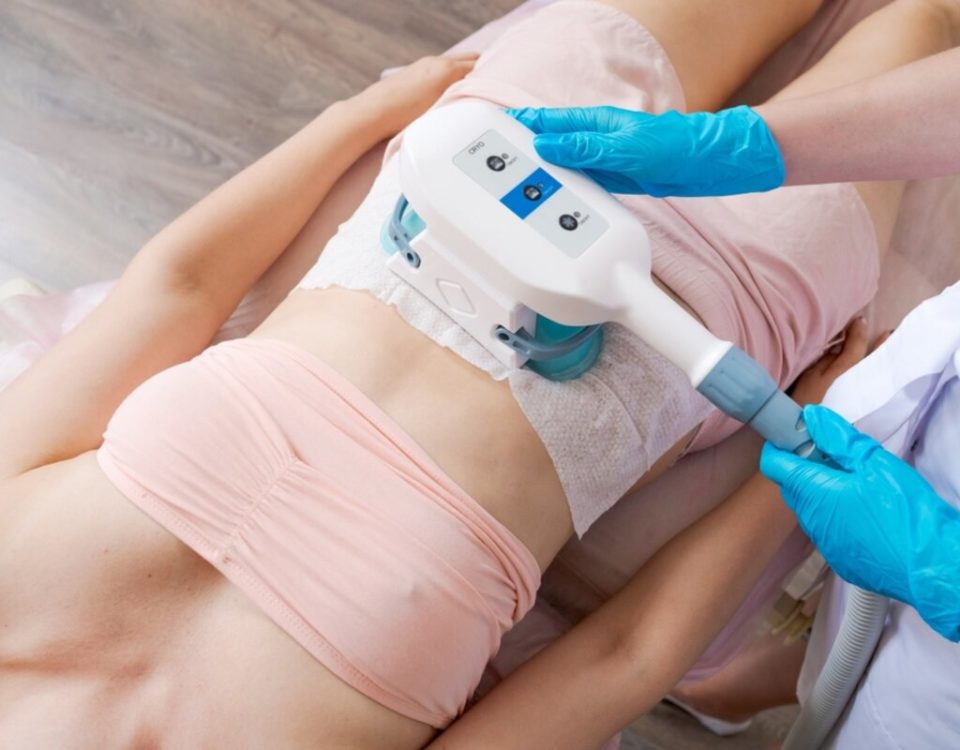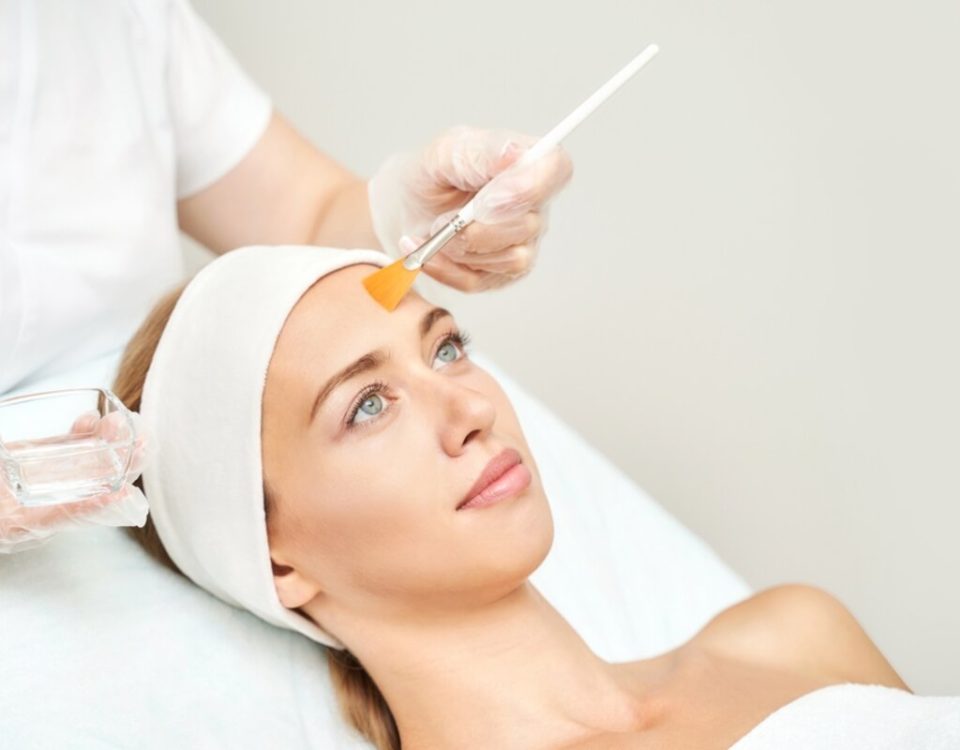
Dry Skin vs. Oily Skin
November 9, 2021
Dry Sensitive Skin vs. Oily Skin
November 23, 2021There’s no question that sunlight is beautiful. Whether it’s a glorious sunset or the feeling of warm sunshine on your shoulders, it’s one of life’s joys.
But the sun isn’t just giving us the life-giving light that you see. There are rays beyond the visible spectrum, and some of them do serious damage. Here’s what you need to know about UV radiation, what it does to the skin, and what you can do about it.
How Ultraviolet Radiation Damages the Skin
The sun’s rays are made up of different wavelengths of energy. The wavelengths that create visible light can be seen in the rainbow. The red light is the longest wavelength, and as they get smaller they make the rest of the colors. The final, smallest wavelength of visible light is violet light, but the spectrum doesn’t end there. Beyond the violet end of the rainbow is energy you can’t see, known as ultraviolet, or UV radiation.
As pretty as the color violet is, what UV radiation does is not so pretty. This wavelength is considered to be a “complete carcinogen,” because it both causes mutations in DNA and creates damage that encourages the growth of tumors. In other words, UV radiation can give you skin cancer and also make it easier for that cancer to flourish.
Not everyone will end up with skin cancer, but all of us experience sun damage to the skin. The same rays that play havoc with our skin’s DNA also make the skin look older. In fact, experts estimate that 80% of visible aging is caused by sun exposure. To understand how to fight that, we have to know more about UV radiation and what it does.
Types of UV Radiation
There are technically three types of UV radiation, but one of them, known as UVC, never makes it through the Earth’s atmosphere. The ones we have to worry about are UVA and UVB.
UVA penetrates the most deeply, affecting all layers of the skin. It damages capillaries, collagen, elastin fiber, epidermal cells, and more. The injury it causes to these important structures is called photoaging, and it’s difficult to repair. UVA also damages DNA, but not as much as UVB does.
UVB has slightly more energy than UVA, and it’s responsible for sunburns. It contributes to photoaging as well, but the biggest danger with UVB is the damage it causes to DNA, which can lead to skin cancer.
What Does UV Damage Look Like?
The most serious form of UV damage is skin cancer. If you notice a new mole, or unusual growth of an existing mole, a lesion with irregular borders, or a mole that bleeds, see a dermatologist right away. Catching skin cancer early gives you the best chance to beat it.
Other forms of sun damage are more common. Known as photoaging, they include wrangles, sagging skin, coarse texture, brown spots, broken capillaries, and a loss of firmness. But although everyone experiences photoaging, it doesn’t mean you’re helpless against it. There are ways to fight back.

Battling UV Damage at Home
Skincare is your first line of defense against photoaging. It takes time and dedication to see results, but here are some things you can do to protect your skin.
#1. Sunscreen
If you’re not wearing sunscreen every day, you’re fighting a losing battle. Pick a broad-spectrum sunscreen with an SPF of at least 30. If it says on the label that it’s broad-spectrum, you’ll know that it protects you from both UVA and UVB rays.
Sunscreen technology has improved a lot recently. If you’re concerned about it feeling sticky, greasy, or having a strong scent, try one of the newer formulas. The best sunscreen for you is one you will use regularly.
#2. Retinoids
The very best topical treatment for photoaging is vitamin A derivatives known as retinoids, such as prescription tretinoin. You can get an over-the-counter version, known as retinol. The prescription-strength is the most effective, but it can cause irritation, so work your way up slowly to a full dose. Over-the-counter retinol is less likely to cause irritation, but it takes much longer to work.
#3. Topical Active Ingredients
Skincare products offer a dizzying array of active ingredients, so it can be hard to know which ones are best for you. Here are some of the best options to combat UV damage.
- Vitamin C: This water-soluble vitamin is an antioxidant, so it helps prevent and repair the damage caused by UV radiation. It also brightens the skin and stimulates collagen production. As an added bonus, vitamin C helps sunscreen work more effectively.
- Niacinamide: A form of a B vitamin that’s also an antioxidant, but it does more than that. It fights hyperpigmentation, reduces redness, improves elasticity, and reduces fine lines.
- Azelaic acid: Don’t let the word “acid” scare you off. This antioxidant can help reduce dark spots, and it’s also anti-inflammatory and soothing.
#4. A Skin-Loving Diet
Applying antioxidants externally isn’t the only option. What you eat can also defend your skin from the inside. Consider adding some of the following foods to your diet.
- High antioxidant foods: Blueberries, leafy greens, deep orange foods such as carrots or pumpkin, cauliflower, and watermelon are all examples of foods that are chock full of different kinds of antioxidants. Having an array of different natural phytonutrients gives you well-rounded protection against damage.
- Nuts, seeds, and fatty fish: Omega-3 fatty acids are anti-inflammatory and support skin health.
- Green tea: Tea contains a flavonol called EGCG that protects the skin from UV damage. It also fights the breakdown of collagen.
In-Office Treatments
Home care is important, but it takes time to see results. In-office procedures can get you faster results, and they’re more powerful than anything you can do at home.
- IPL photofacial: Intense pulsed light penetrates deep into the skin to stimulate collagen synthesis and break down brown spots.
- PRP facial: Platelet Rich Plasma is removed from the client’s blood, then introduced into their skin by microneedling. These rich growth and healing factors cause stem cells in the skin to jump-start collagen production.
- Laser treatments: Laser skin resurfacing is very effective on rough texture and wrinkles. There are different strengths and kinds of lasers, and it’s important to have an experienced provider walk you through the options.
- Injectables and fillers: Injectables such as Botox can soften expression lines. Dermal fillers, such as Restylane and Juvederm can replace some of the volume that’s lost when collagen is broken down.
In Closing
Sun damage can make your skin older before its time, but we can help you fight back. If you’re interested in hearing more about what we can do for you, schedule a consultation with SpaMD today.
New Clients:
$35 deposit for all new clients
Cancellation/No Show Policy:
$35 fee for all no show, no call and any cancellations less than 24hrs before the start of your appointment.Any prepaid services will be forfeited.
Call us at +1(651)222-4490
Email us at SpaConsultantsMD@gmail.com
or, Schedule a free consultation
We are located on the main level inside of the Blair Arcade Building. We validate parking in the lot connected to the building off of Selby. Be sure to bring your ticket in with you!




